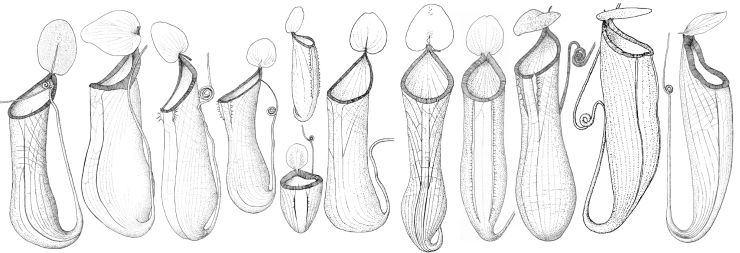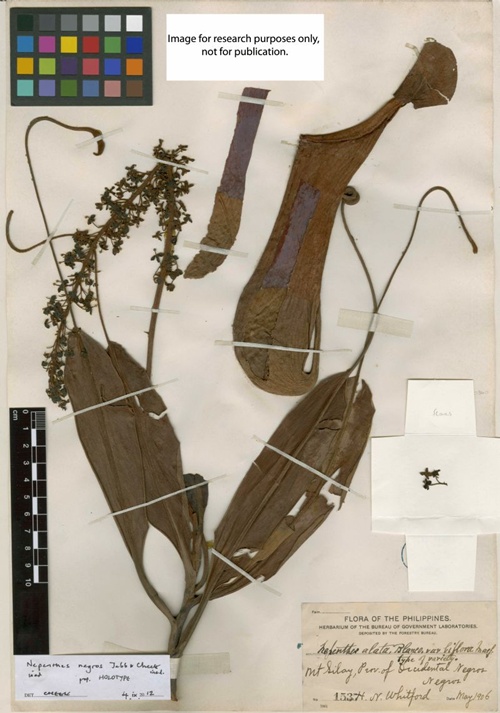
One of the roles of the National Botanic Gardens is taxonomic research into the Irish and world flora. Over the past year the Director, Matthew Jebb, has published (along with a colleague at the Royal Botanic Gardens Kew – Martin Cheek) twelve new species of the carnivorous Pitcher Plant genus Nepenthes from the Philippines. Some of these had been collected nearly a century ago, others more recently. All come from the Philippines, which is now one of the most diverse islands on earth for these plants. All the species were described and published during 2013.
Some of these have been named after their islands of origin (Leyte, Negros, Ramos and Samar Islands), others after mountains (Mt. Kitanglad and Mt. Alzapan) two are named after other botanists (Shigeo Kurata and F. Cid), two are distinguished from species they were formerly confused with (alata and gracilis) one after the ultramafic soil on which it grows, while one is suspected of being extinct and named accordingly.
The pitchers of the new species are shown above. From left to right they are:
- Nepenthes abgracilis Jebb & Cheek – Phytotaxa 151: 29
- Nepenthes extincta Jebb & Cheek – European Journal of Taxonomy 69: 14.
- Nepenthes kitanglad Jebb & Cheek – European Journal of Taxonomy 69: 10.
- Nepenthes kurata Jebb & Cheek – European Journal of Taxonomy 69: 6.
- Nepenthes cid Jebb & Cheek – Phytotaxa 151: 30
- Nepenthes alzapan Jebb & Cheek – Phytotaxa 100(1): 59.
- Nepenthes leyte Jebb & Cheek – European Journal of Taxonomy 69: 17.
- Nepenthes ramos Jebb & Cheek – Willdenowia 43(1): 108.
- Nepenthes abalata Jebb & Cheek – Nordic Journal of Bot. 31(2): 153.
- Nepenthes negros Jebb & Cheek – Nordic Journal of Bot. 31(5): 619.
- Nepenthes ultra Jebb & Cheek -Blumea 58(1): 241
- Nepenthes samar Jebb & Cheek – Blumea 58(1): 82
Each year nearly 2,000 species of plant are described as new. Naming a new species of plant involves firstly deciding it has never been described before. Next a description must be given that distinguishes it from all others in the genus. Next a latin name that has not been coined before must be devised. Lastly a specimen – the Type Specimen – has to be selected. This specimen need not be a ‘perfect’ example, but simply a ‘typical’ example of the species. This specimen means that future taxonomists can be absolutely certain of the identity of the new species and rather than accepting the original authors description, can check for themselves. The type specimen of Nepenthes negros – a specimen collected by Harry Whitford (No.1537) in May 1906 on Mount Silay on Negros Island and deposited at Manilla and the Kew herbarium – is shown below.

Source: National Botanic Gardens – Twelve New species of Pitcher Plants from the Philippines





